#Technology in farming
Explore tagged Tumblr posts
Text
The Rise of Drone Technology in Modern Agriculture
Discover how drone technology is revolutionizing modern agriculture with precision farming, crop monitoring, and data-driven insights. Learn how Theta Technolabs supports smart farming through cutting-edge drone and IoT solutions.
#Drone technology in agriculture#Modern agriculture solutions#Precision farming#Smart farming with drones#Crop monitoring with drones#IoT in agriculture#IoT solutions#Technology in farming#Sustainable farming technology
0 notes
Text
What to Expect from ICCF 2024: A Sneak Peek into Kenya’s Largest Contract Farming Event
“Discover how the International Conference on Contract Farming (ICCF 2024) is set to transform Kenya’s agriculture sector by promoting sustainable practices, enhancing market access, and fostering transparent partnerships.” “Learn about the ICCF 2024 in Nairobi, where farmers, policymakers, and agribusiness leaders will explore solutions to contract farming challenges, technology integration, and…
#agribusiness Kenya.#Agricultural Innovation#agricultural value chain Kenya#agriculture conference Nairobi#agriculture policy Kenya#contract farming Kenya#fair pricing in agriculture#farming compliance challenges#farming partnerships#food security Kenya#government role in farming#ICCF 2024#KENAFF farming conference#Kenyan agriculture sector#KEPSA contract farming#KNCCI agriculture#market access for farmers#smallholder farmers Kenya#sustainable farming practices#technology in farming
0 notes
Text
Harnessing Technology for Sustainable Agriculture: The Role of AgriTech Startups
In today’s post, we’ll delve into the transformative role of AgriTech startups in revolutionizing farming practices and promoting sustainable agriculture. With the advent of innovative technologies, digital solutions, and data-driven insights, AgriTech startups are reshaping the agricultural landscape and driving efficiency, productivity, and sustainability in farming. Let’s explore the key ways…

View On WordPress
#AgriTech Startups#Digital Solutions#NPower Farmers#NPowerFarmers#Precision Farming#Sustainable Agriculture#Technology in Farming
0 notes
Text
Good News - July 22-28
Like these weekly compilations? Tip me at $kaybarr1735 or check out my new(ly repurposed) Patreon!
1. Four new cheetah cubs born in Saudi Arabia after 40 years of extinction

“[T]he discovery of mummified cheetahs in caves […] which ranged in age from 4,000 to as recent as 120 years, proved that the animals […] once called [Saudi Arabia] home. The realisation kick-started the country’s Cheetah Conservation Program to bring back the cats to their historic Arabian range. […] Dr Mohammed Qurban, CEO of the NCW, said: […] “This motivates us to continue our efforts to restore and reintroduce cheetahs, guided by an integrated strategy designed in accordance with best international practices.””
2. In sub-Saharan Africa, ‘forgotten’ foods could boost climate resilience, nutrition

“[A study published in PNAS] examined “forgotten” crops that may help make sub-Saharan food systems more resilient, and more nutritious, as climate change makes it harder to grow [current staple crops.] [… The study identified 138 indigenous] food crops that were “relatively underresearched, underutilized, or underpromoted in an African context,” but which have the nutrient content and growing stability to support healthy diets and local economies in the region. […] In Eswatini, van Zonneveld and the World Vegetable Center are working with schools to introduce hardy, underutilized vegetables to their gardens, which have typically only grown beans and maize.”
3. Here's how $4 billion in government money is being spent to reduce climate pollution

“[New Orleans was awarded] nearly $50 million to help pay for installing solar on low to middle income homes [… and] plans to green up underserved areas with trees and build out its lackluster bike lane system to provide an alternative to cars. […] In Utah, $75 million will fund several measures from expanding electric vehicles to reducing methane emissions from oil and gas production. [… A] coalition of states led by North Carolina will look to store carbon in lands used for agriculture as well as natural places like wetlands, with more than $400 million. [… This funding is] “providing investments in communities, new jobs, cost savings for everyday Americans, improved air quality, … better health outcomes.””
4. From doom scrolling to hope scrolling: this week’s big Democratic vibe shift

“[Democrats] have been on an emotional rollercoaster for the past few weeks: from grim determination as Biden fought to hang on to his push for a second term, to outright exuberance after he stepped aside and Harris launched her campaign. […] In less than a week, the Harris campaign raised record-breaking sums and signed up more than 100,000 new volunteers[….] This honeymoon phase will end, said Democratic strategist Guy Cecil, warning the election will be a close race, despite this newfound exuberance in his party. [… But v]oters are saying they are excited to vote for Harris and not just against Trump. That’s new.”
5. Biodegradable luminescent polymers show promise for reducing electronic waste

“[A team of scientists discovered that a certain] chemical enables the recycling of [luminescent polymers] while maintaining high light-emitting functions. […] At the end of life, this new polymer can be degraded under either mild acidic conditions (near the pH of stomach acid) or relatively low heat treatment (> 410 F). The resulting materials can be isolated and remade into new materials for future applications. […] The researchers predict this new polymer can be applied to existing technologies, such as displays and medical imaging, and enable new applications […] such as cell phones and computer screens with continued testing.”
6. World’s Biggest Dam Removal Project to Open 420 Miles of Salmon Habitat this Fall

“Reconnecting the river will help salmon and steelhead populations survive a warming climate and [natural disasters….] In the long term, dam removal will significantly improve water quality in the Klamath. “Algae problems in the reservoirs behind the dams were so bad that the water was dangerous for contact […] and not drinkable,” says Fluvial Geomorphologist Brian Cluer. [… The project] will begin to reverse decades of habitat degradation, allow threatened salmon species to be resilient in the face of climate change, and restore tribal connections to their traditional food source.”
7. Biden-Harris Administration Awards $45.1 Million to Expand Mental Health and Substance Use Services Across the Lifespan
““Be it fostering wellness in young people, caring for the unhoused, facilitating treatment and more, this funding directly supports the needs of our neighbors,” said HHS Secretary Xavier Becerra. [The funding also supports] recovery and reentry services to adults in the criminal justice system who have a substance use disorder[… and clinics which] serve anyone who asks for help for mental health or substance use, regardless of their ability to pay.”
8. The World’s Rarest Crow Will Soon Fly Free on Maui

“[… In] the latest attempt to establish a wild crow population, biologists will investigate if this species can thrive on Maui, an island where it may have never lived before. Translocations outside of a species’ known historical range are rare in conservation work, but for a bird on the brink of extinction, it’s a necessary experiment: Scientists believe the crows will be safer from predators in a new locale—a main reason that past reintroduction attempts failed. […] As the release date approaches, the crows have already undergone extensive preparation for life in the wild. […] “We try to give them the respect that you would give if you were caring for someone’s elder.””
9. An optimist’s guide to the EV battery mining challenge
““Battery minerals have a tremendous benefit over oil, and that’s that you can reuse them.” [… T]he report’s authors found there’s evidence to suggest that [improvements in technology] and recycling have already helped limit demand for battery minerals in spite of this rapid growth — and that further improvements can reduce it even more. [… They] envision a scenario in which new mining for battery materials can basically stop by 2050, as battery recycling meets demand. In this fully realized circular battery economy, the world must extract a total of 125 million tons of battery minerals — a sum that, while hefty, is actually 17 times smaller than the oil currently harvested every year to fuel road transport.”
10. Peekaboo! A baby tree kangaroo debuts at the Bronx Zoo

“The tiny Matschie’s tree kangaroo […] was the third of its kind born at the Bronx Zoo since 2008. [… A] Bronx Zoo spokesperson said that the kangaroo's birth was significant for the network of zoos that aims to preserve genetic diversity among endangered animals. "It's a small population and because of that births are not very common," said Jessica Moody, curator of primates and small mammals at the Bronx Zoo[, …] adding that baby tree kangaroos are “possibly one of the cutest animals to have ever lived. They look like stuffed animals, it's amazing.””
July 15-21 news here | (all credit for images and written material can be found at the source linked; I don’t claim credit for anything but curating.)
#hopepunk#good news#cheetah#extinct species#africa#nutrition#food#farming#gardening#pollution#climate#climate change#climate crisis#democrats#us politics#us elections#kamala harris#voting#recycling#biodegradable#technology#salmon#habitat#fish#mental illness#mental health#substance abuse#hawaii#electric vehicles#zoo
872 notes
·
View notes
Text
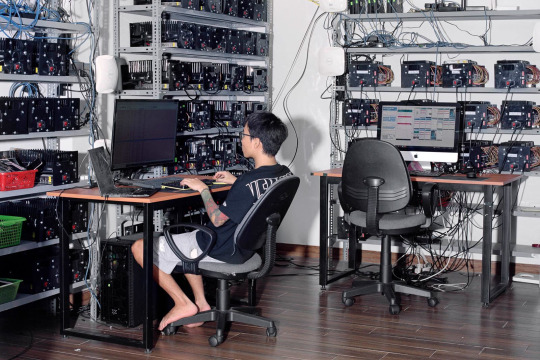
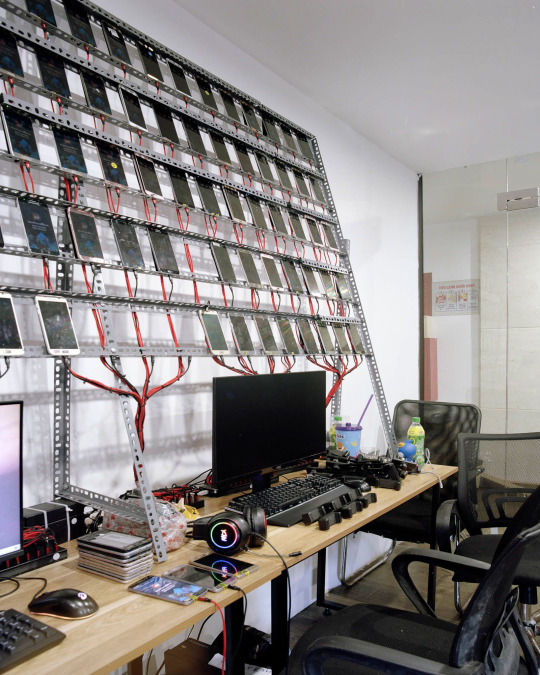
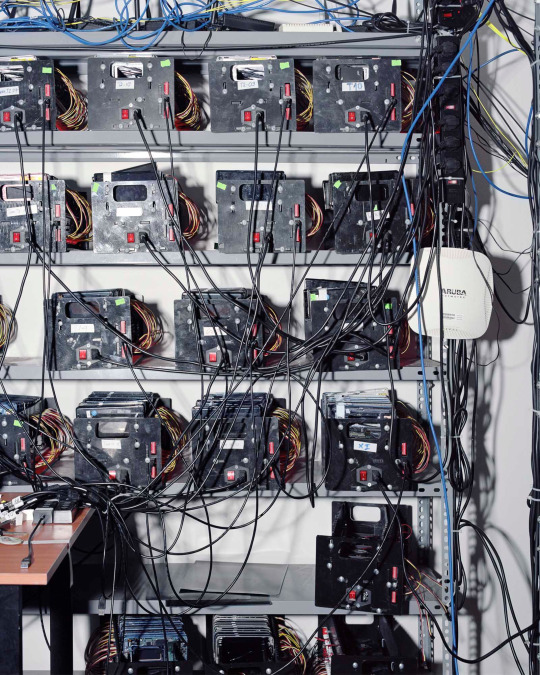

"Click-Farms" in Vietnam Photographed by Jack Latham — 2024
#photography#art#technology#vietnam#portrait#click farm#internet#jack latham#aesthetic#cyberpunk#contemporary art#architecture#curators#curators on tumblr
1K notes
·
View notes
Text
A New Resin is Able to Recycle Wind Turbine Blades Into Products Like Countertops and Diapers
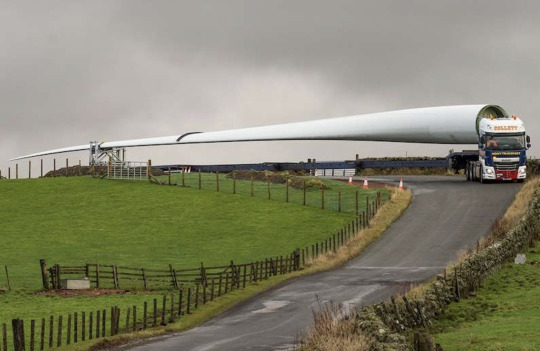
From this article in Anthropocene Magazine:
Some companies are finding ways to recycle blades by shredding them and reusing the fiberglass and plastic resin to make cement and plastics. But the world will produce over 40 million metric tons of turbine blade waste by 2050, according to one study. That scale highlights an urgent need to make recycling blades easier. To address the issue, chemical engineering and materials science professor John Dorgan and colleagues developed a new resin made of a synthetic polymer and the plant-based polymer polylactide, or PLA, which is used to make biodegradable packaging. Fiberglass panels that the team made with the new resin were strong and durable enough for wind turbines and boat hulls. To recycle the panels, the researchers dissolved them in a solution and removed the glass fibers. The resin could then be used to make new panels or mixed with different minerals to make cultured stone for kitchen countertops. What’s more, the researchers could also treat the recovered resin in an alkaline solution to make an acrylic material for car lights or the absorbent material used in diapers. With some more chemical processing, they made a food preservative called potassium lactate, with which Dorgan’s team made gummy bears.
#wind power#wind energy#wind farm#wind turbine#recycling#clean energy#renewable energy#technology#adaptation#good news#hope#hopepunk#solarpunk#climate change#global warming
229 notes
·
View notes
Text

🌾🍚🧬 A new strain of rice offers hope for drought-stricken communities in Chile! Chilean scientists are trialing the “Jaspe” rice strain, described as more environmentally conscious, “less-thirsty,” and “climate-smart.” Trials have also proven the strain to be high-yield with the right growing method, producing nearly ten times more than a conventional rice field!
#good news#crops#climate#climate change#agriculture#climate innovation#climate solutions#rice#plant science#drought#climate resilience#science#climate science#climate research#environment#south america#chile#food tech#food technology#food security#food systems#farming#climate adaptation#hope#hopepunk#hopecore
23 notes
·
View notes
Text
Submitted via Google Form:
If a town had their food completely self-sustained, how much farmland would they need? It's a heavily vegetarian community by the way. How much would it depend on the exact crops they're growing i.e. beans vs lentils, rice vs wheat? Let's say 30,000 people for now. If I need to adjust for a different population, would it be linear or not? What if they optimised their fields for most nutrition to land required? The town is in the coastal tropics by the way. Crops that can't be grown there can be greenhoused. Also, I heard about crops being grown in seawater instead. How much land can be saved if some of the crops were there instead? Also, how possible is it for this community to be able to achieve less than 5% food waste?
Tex: So I went and gave “how much farmland is needed per person” a quick search on the internet, and here are the first three results:
How Much Land Does It Take To Feed One Person – Online Calculator by William Swanson | Permaculturism
How much land to feed a person? by The Naked Scientists
Agricultural land use per person by Our World in Data
Now, I do not necessarily claim these are the best search results, only the first search results. (Admittedly, the top result is pretty good for most uses.) Adjusting your keywords and search parameters will likely net you more pertinent results.
For some additional context, here is a list of types of malnutrition (Wikipedia). It has a category for both under- and over-nourishment, which will be useful for your context and as a form of general education in real life.
Humans require a varied diet. If they do not get this, and in proper quantities, they fall ill. Trade has been an enormous supplement for this, in terms of things like preserved produce or meats that cannot be produced locally for various reasons, or preservation agents such as salt (which also fill a spot in the nutritional index).
Land can only produce so much during a growing period, and requires seasonal periods to lay fallow - something which typically requires the use of manure to amend the soil to a useful mineral ratio (you can use chemicals, strictly speaking, if you don’t mind destroying the microbiome in the process). Greenhouses have much the same pitfalls, hence their experimental or ornamental nature compared to the style of agriculture humans have been practicing for thousands of years.
The amount of arable land will dictate how many people can survive healthily in a given area. For this, you’ll probably want to use the calculator linked above, and make sure to account for non-arable, uninhabitable land for other flora, other fauna, and geological features such as rocks or beaches.
It will not be a utopia, and an agriculturally-dependent society that vegetarianism or veganism (an even more stringent diet) demands will necessarily spend the majority of their time tending to their crops and the accessory chores to keep their farms running year-round.
Additionally, food waste is a relatively new concept, and mostly for the Western or adjacent world, because historically most people have been too poor to afford wasting even a single scrap of a mealy vegetable. If it cannot be cooked into edibility, fed to a farm animal, composted, used to insulate crops over winter, converted into a useful craft (see: textiles, manufacturing of non-food goods), or otherwise consumed in a worthwhile manner, it generally is not bothered with as a crop because wasted crop costs money - and money is historically housed by the wealthy who need not worry about such things as where and when their next meal arrives, not the people who produce the food.
26 notes
·
View notes
Text
Experts Demonstrate How Solar Farms Can Become Hubs for ‘Biodiversity Enhancement’ at Every Level https://www.goodnewsnetwork.org/experts-uncover-side-effects-of-solar-farms-they-become-hubs-for-biodiversity-enhancement/
#good news#environmentalism#science#environment#solar farms#solar panels#solar energy#green energy#green technology#agriculture#biodiversity
30 notes
·
View notes
Text
Ways to Help Tea Farmers for Sustainable Tea Farming in Kenya
Explore the challenges and opportunities in Kenya’s tea industry as smallholder tea farmers face rising costs, corruption, and the need for sustainable practices. Discover how government support can revitalize this vital sector. Kenya’s tea industry is a key player in the global market, but smallholder farmers are struggling. Learn about the impact of rising costs, corruption, and the potential…
#Agricultural Innovation#climate change#community impact#cooperative farming#corruption in tea sector#crop diversification#direct tea sales#economic impact#fair compensation#farmer empowerment.#farmer training#government support#Kenya Tea Industry#KEPHIS certification#market demands#rising costs#Rural development#smallholder farmers#smallholder income#sustainable practices#tea cultivation#tea exports#tea farming challenges#tea farming sustainability#tea industry reforms#tea market trends#tea production#technology in farming#transparency in agriculture#value-added opportunities
0 notes
Text
Embracing Innovation: How Technology is Revolutionizing Farming in Nigeria
Introduction:Welcome to the future of farming in Nigeria, where innovation and technology are reshaping the agricultural landscape. In this post, we’ll delve into the exciting developments that are revolutionizing farming practices across the country. 1. Precision Farming:Discover how precision farming techniques are optimizing crop yields and resource usage. From soil sensors to satellite…
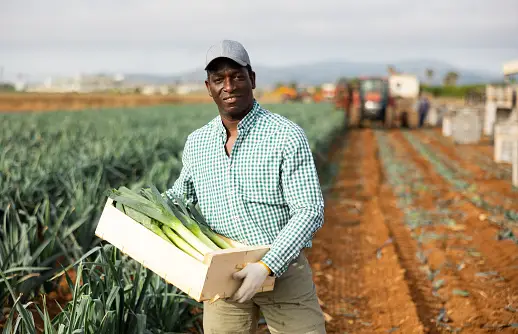
View On WordPress
#Digital Agriculture#Farming Innovation#Nigerian Agriculture#Precision Farming#Technology in Farming
0 notes
Text
i don't want to sound like a doomer but even though the milestone of 40% renewable/"clean" energy generation was reached last year, emissions also reached an all-time high, 4% higher than ever before. this is allegedly due to the increased demand for air conditioning as the temperature of the planet rises. the new clean energy production mostly covered the cost of demand for new technology demand like LLM AI's use of power. i'm not saying AC is bad. the point is that new power is being generated for new demand while extant demand (and then some) is still being provided by the same source of power: fossil fuels. the goal can't just be adding newer greener power, it has to be about removing the sources of power causing emissions and fundamentally removing the option to continue increasing emissions as well.
it is projected that the production of "cleaner" electricity will outpace this increased demand -- for air conditioning, at least. cooling/ac also only accounts for 3% of total co2 emissions; heating actually causes far more emissions.

refrigerant emissions do not come anywhere near where they'd need to be to reach the level of emissions heating produces, also..
heat is direct energy demand because heat is literally energy. cooling is the use of energy to push air through a refrigerant system, causing a chemical interaction that reduces the total energy (heat) of the air as it's expelled back out of the unit -- meaning that it is using heat (and energy) indirectly to moderate temperature. heating can also frequently come from direct burning of fuel, which produces co2 by its very nature. you would literally do more on a personal level by never taking a hot shower again than turning off your ac, but personal lifestyle changes have limited effect anyway.
there are a lot of factors going into every statistic that makes even attempting to understand climate change confusing and depressing to read. they are all important, though. the most important one is emissions. we are making cleaner energy to reduce emissions. if we have failed to reduce emissions then it has not accomplished that goal.
#i'm also skeptical of the fact that most of it's solar#i also don't like the framing of ac as the cause of excess but it may be accounting for actual production and not projected totals#for example a server farm that has built its own solar grid for power will not produce many emissions#despite demanding a lot of power#whereas a person who lives in the south and has no option but to receive electricity from a coal plant to cool their home#if obviously going to produce more emissions even though the demand for energy is far less than the server farm#which is what i mean by producing more clean energy for new demand instead of replacing coal sources#and those new technologies also demand cooling...#but as far as i could tell the source of demand for cooling was people using their ac's more during heat waves
15 notes
·
View notes
Text
Dandelion News - February 8-14
(I’m finally starting to get better from having had pneumonia for 2+ weeks, hopefully next week’s news should be on time)
Like these weekly compilations? Tip me at $kaybarr1735 or check out my Dandelion Doodles!
1. Solar-powered device captures carbon dioxide from air to make sustainable fuel

“[The] solar-powered reactor could be used to make fuel to power cars and planes[.… It] does not require fossil-fuel-based power, or the transport and storage of carbon dioxide, but instead converts atmospheric CO2 into something useful using sunlight.”
2. How artificial light can boost coral reef recovery

“UZELA is [an autonomous submersible] designed to attract zooplankton […] by emitting specific wavelengths of light. [… In a ”six-month testing period,” it] significantly increased local zooplankton density and boosted the feeding rates of both healthy and bleached coral.”
3. Next-gen solar cells now fully recyclable with water-based method

“The recycled solar cell has the same efficiency as the original one. The solar cell is made of perovskite and the main solvent is water. […] They are not only relatively inexpensive and easy to manufacture but also lightweight, flexible and transparent.”
4. Green walls cool cities and create urban habitats

“The researchers measured a cooling effect of up to 0.6–0.7 degrees Celsius [… which] could help combat the urban heat island phenomenon. […] The researchers [also] found that plant-covered facades hosted over 100 animal species, including insects, spiders, and birds.”
5. Major cause of honeybee mortality can be easily reduced

“If treatment occurs too soon, it may not fully eliminate the mites, allowing them to rebound before the season ends. […] Similar to antibiotic-resistant bacteria, mites that survive mistimed or improperly applied treatments become more resistant to future applications.”
6. Uganda community group restores shea groves and livelihoods

“As part of a larger effort to restore Uganda’s shea parklands, the cooperative has successfully rehabilitated more than 500 hectares (1,240 acres) of degraded land, integrating shea trees (Vitellaria paradoxa) and other native species with maize and sunflower crops.”
7. Senate Renews Commitment to the Great Lakes

“The [Act] represents the most significant federal investment in the health of the Great Lakes, addressing critical challenges such as pollution, invasive species, and habitat restoration. The Great Lakes […] hold 20 percent of the world’s surface freshwater[….]”
8. Earth Gets Its Largest Protected Tropical Forest Reserve

“The Kivu-Kinshasa Green Corridor will […] protect 108,000 square kilometres of primary forest and support 60 million people who depend on the forest for food, energy and jobs. […] Through this approach, the DRC is empowering local communities to protect the forest while fostering economic growth.”
9. Australia’s Rarest Bird of Prey Spotted in Central Australia After 30 Years

“Dr. Henderson’s finding is an encouraging sign of the health of the sanctuary’s ecosystems as well as the bird’s continued migration into new areas. This bird’s presence in the sanctuary is particularly significant as it is the first confirmed sighting in the region since the mid-1990s.”
10. Australian company wins contract to design “hydrogen ready�� high speed ferry

“The ferry, the Horizon X, will have capacity for 1,650 passengers and 450 cars, and will be able to travel at a speed of up to 35 knots. […] The ship will also have a specially-designed propulsion system arrangement that repurposes exhaust from the engine to help propel the vessel, in theory reducing its emissions.”
February 1-7 news here | (all credit for images and written material can be found at the source linked; I don’t claim credit for anything but curating.)
#hopepunk#good news#solar power#sustainability#carbon capture#technology#coral reef#ocean#solar panels#solar energy#recycling#green infrastructure#urban heat#urban#biodiversity#honey bees#beekeeping#africa#farming#great lakes#us politics#conservation#nature#australia#birds#endangered species#transportation#ferry#boat#energy efficiency
100 notes
·
View notes
Text
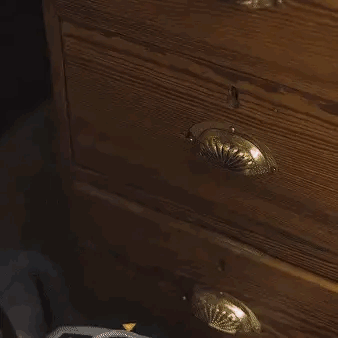
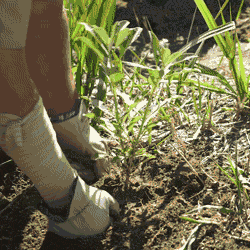



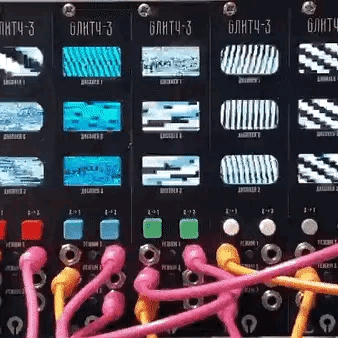

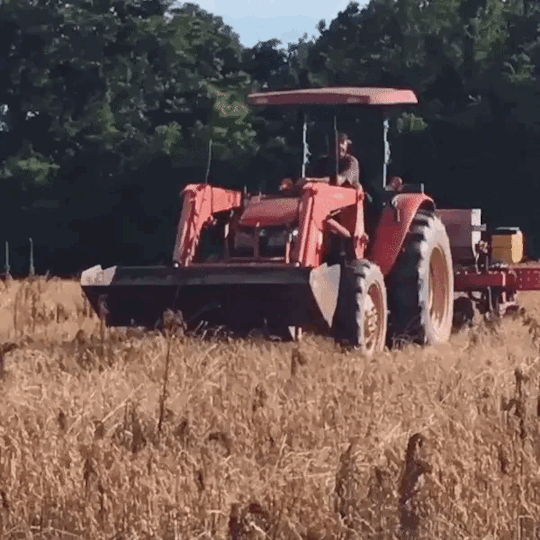
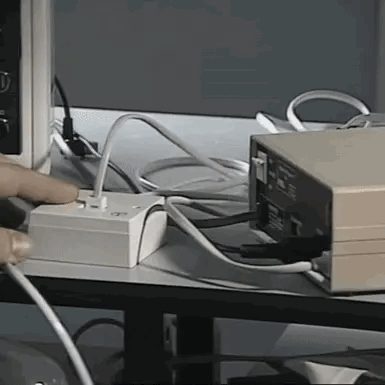
"Watching Nauman set the corner we are aware, sometimes painfully so, that the duration of an event often depends on things we cannot control, for instance, how long it takes to dig the dirt or how powerful the tools are, and how much one person can do at a time."
stimboard 4: setting a good corner (allegory and metaphor) by Bruce Nauman

🌾 : 📼 : 🪚
🪚 : 🌾 : 📼
📼 : 🪚 : 🌾
#stimboard#stimblr#vhs#farm#gardening#technology#tech#tech stim#computer#farm stim#🫧#i looove this piece so much#bruce nauman#settting a good corner (allegory and metaphor)#aggnm
24 notes
·
View notes
Text
It's about time for me to torment yall with yet another Near Dark/Twister crossover headcanon
Severen doesn't understand(read: REFUSES TO UNDERSTAND) a single thing about modern day technology, not ANY of it.
It's 1996 and...Jo Harding, Doctor of Atmospheric Science??? What the fuck is the atmosphere???? Whatever the sky produces is between Mother Nature and the big man upstairs OBVIOUSLY, somehow Jo knows where and when a tornado is gonna pop up??? Only logical explanation is witchery and no one can tell him otherwise
#A woman doctor who chases storms??? That's a witch baby#A witch and her weird ass coven of misfits who he's not entirely convinced weren't once farm animals#She turned the farm animals into humans like in that Cinderelly story oh baby that's a witch!!!#she's working with basic equipment and he thinks she's casting some pretty wicked spells#and with no spellbook or cauldron??? She must be a pretty powerful witch#jokes on Severen the only one with unexplainable 'powers' is Bill who...cannot be explained by technology OR science#twister 1996#near dark#severen#jo harding#crossover crackship madness unsues#Into the Twisterverse
15 notes
·
View notes
Text
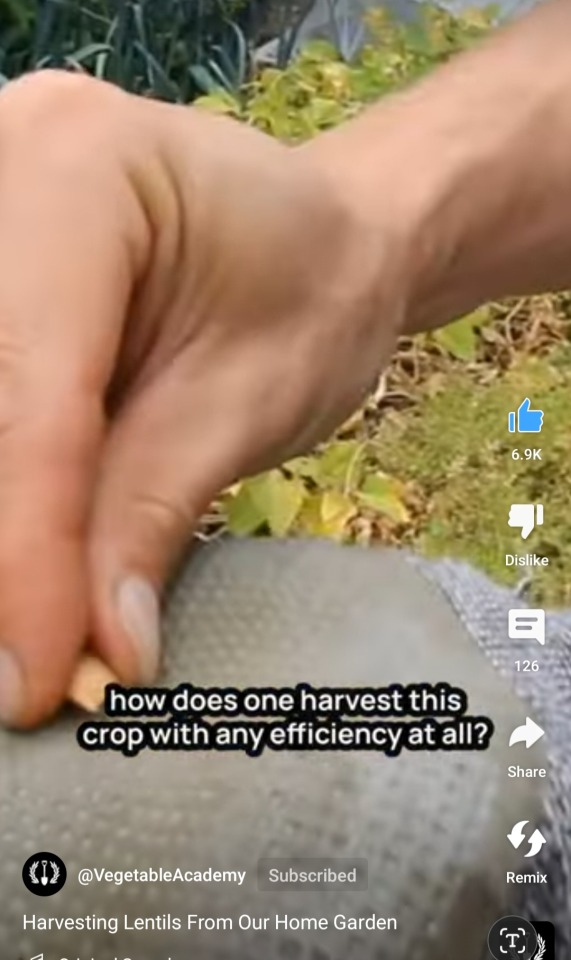
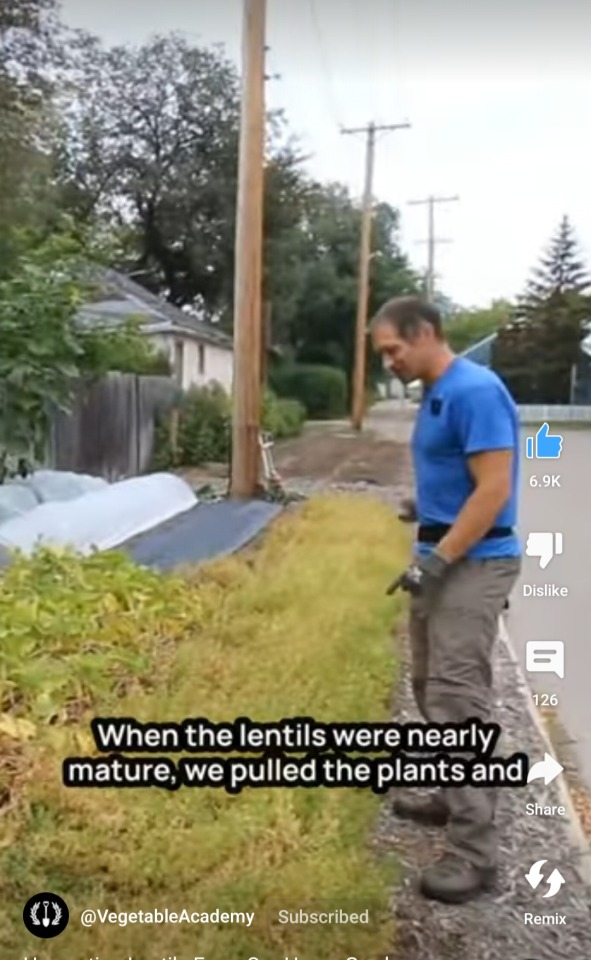
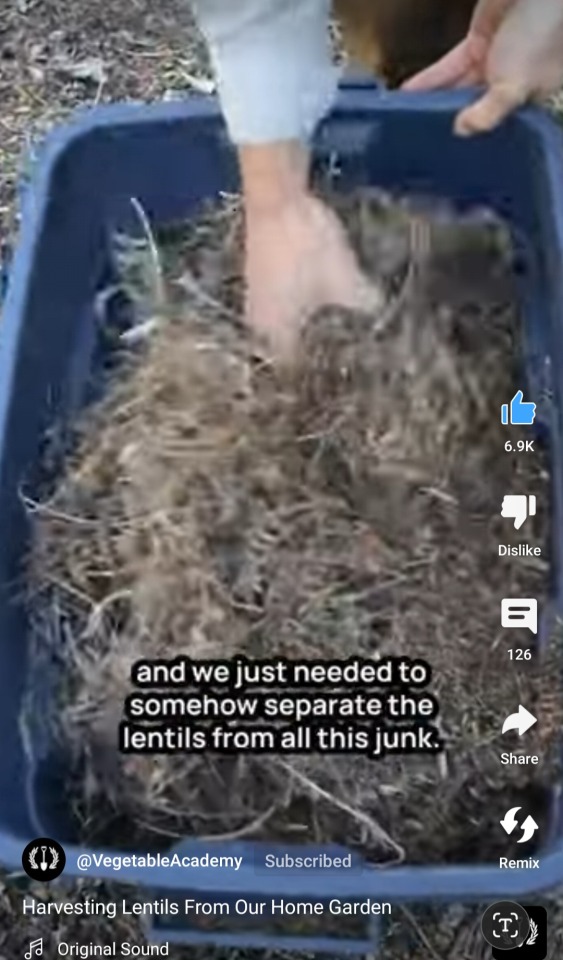


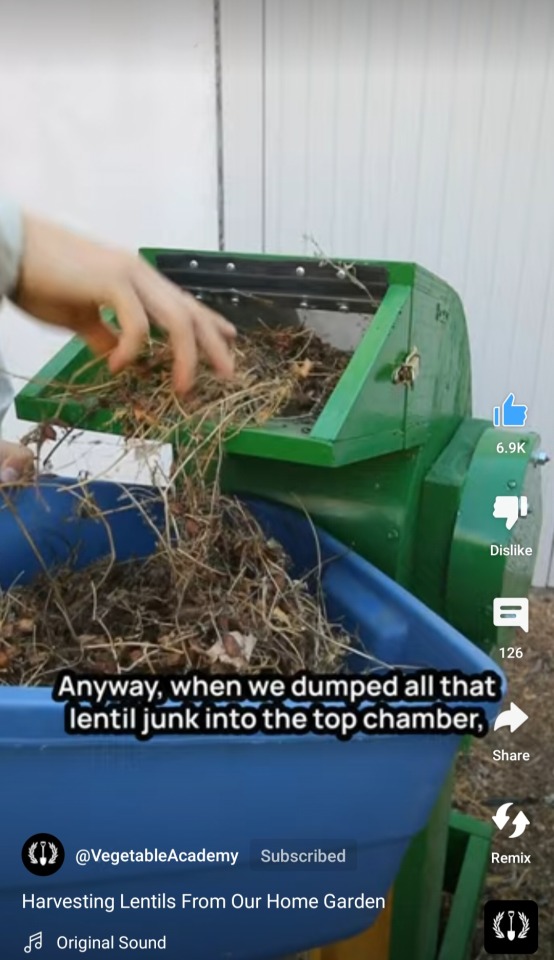

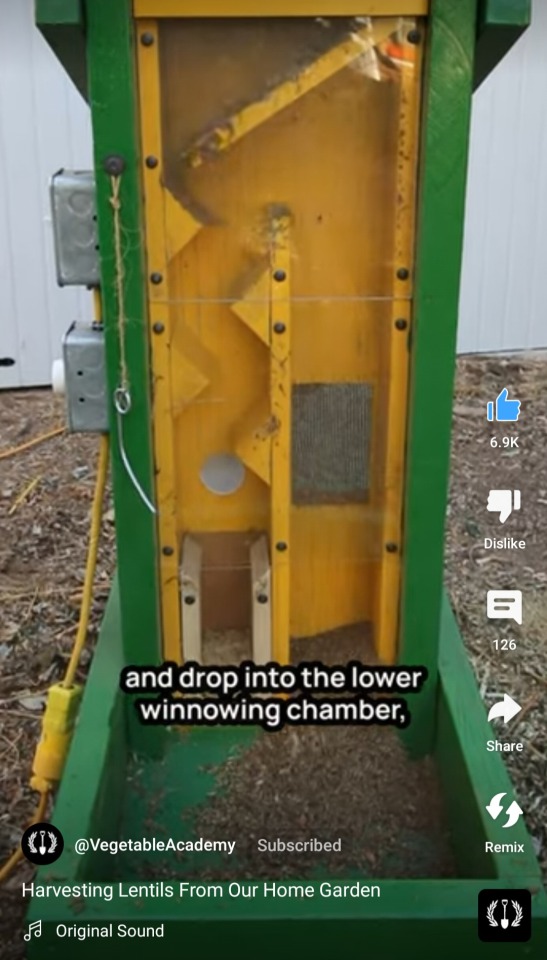
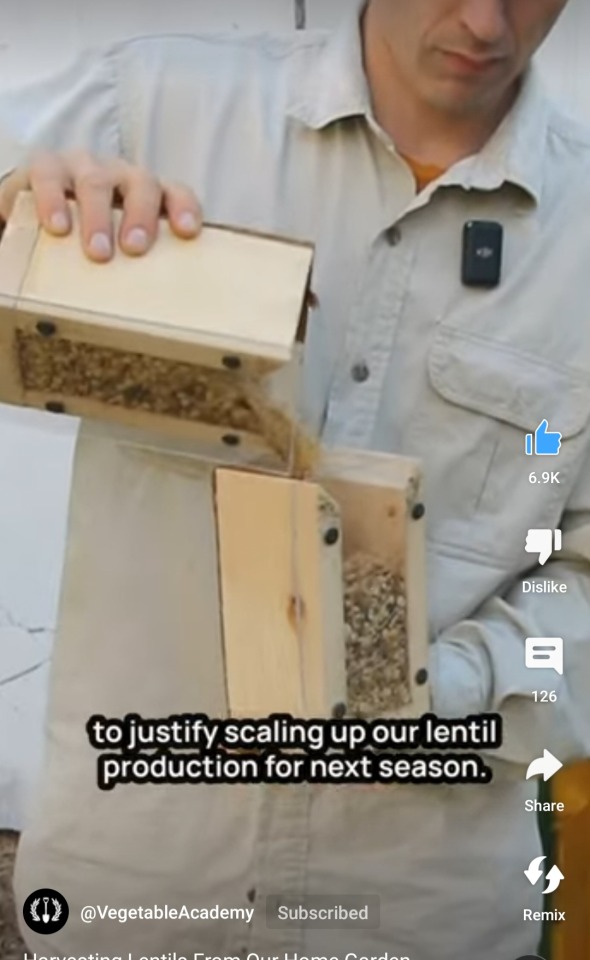
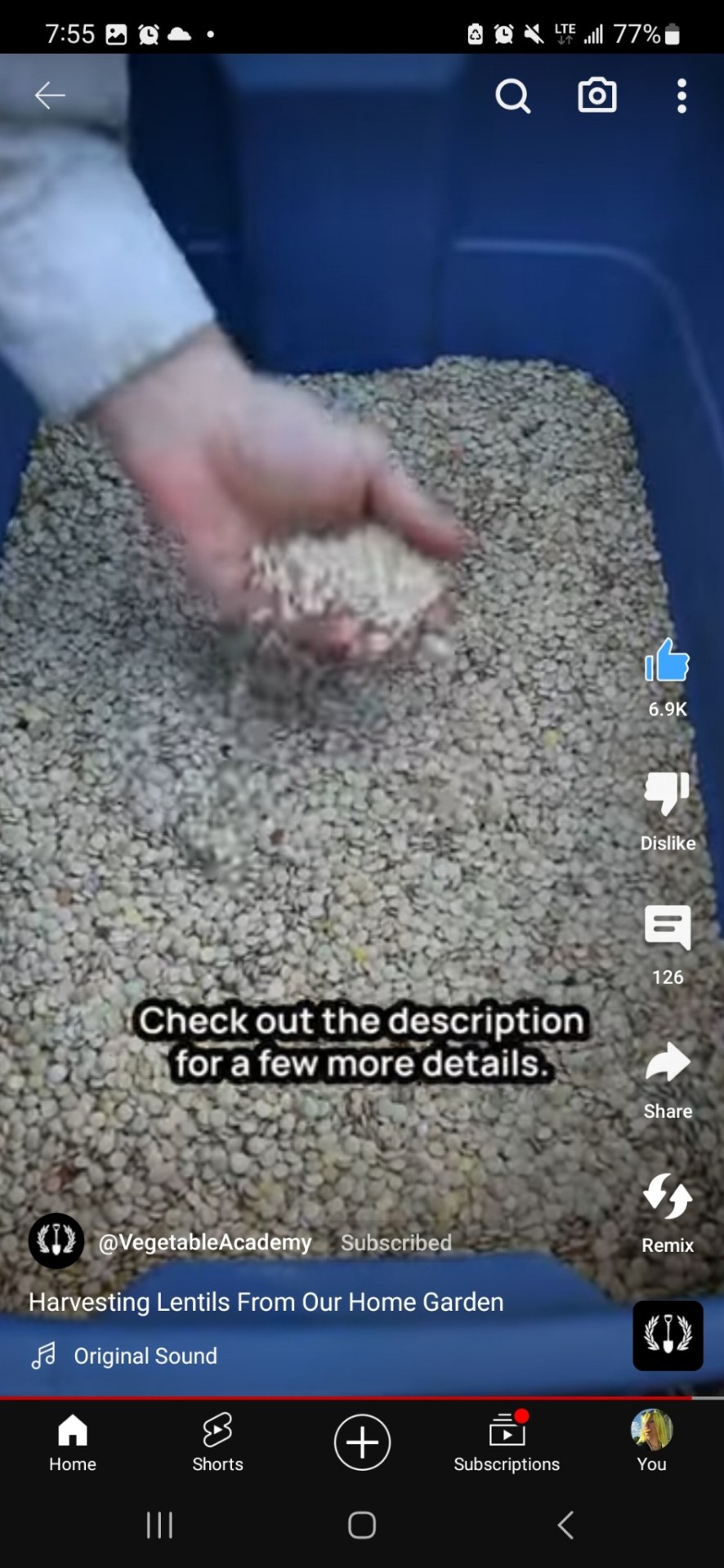
#permaculture#solarpunk#functional supply chains#garden hacks#protein farming#urban farming#green technology
85 notes
·
View notes